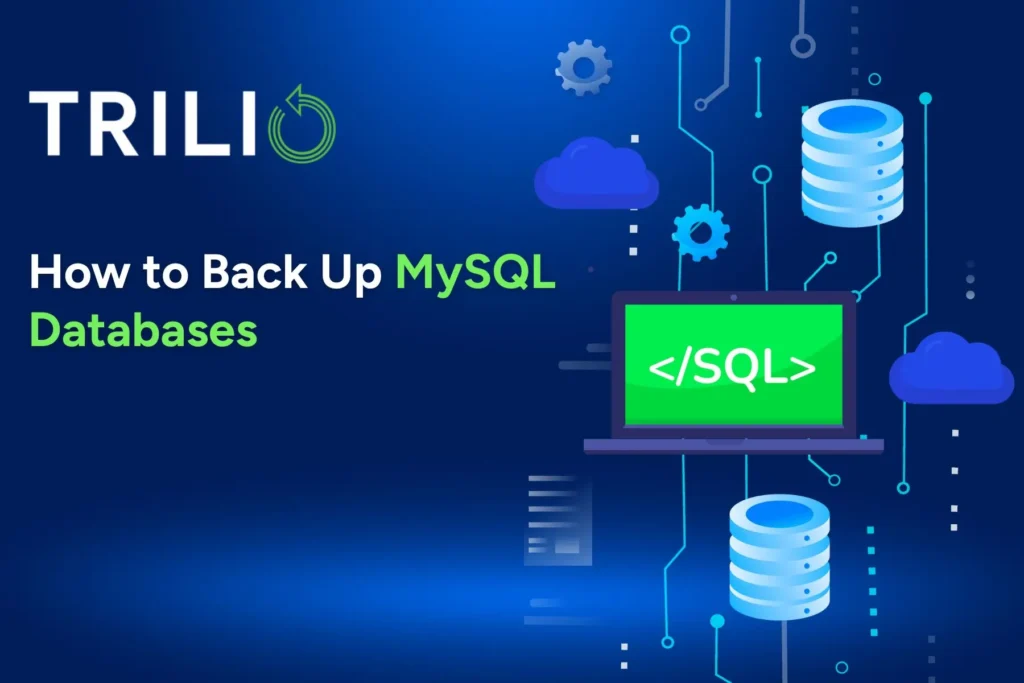
A MySQL database backup isn’t just a file copy; it’s a snapshot of your data that must remain consistent and recoverable. The method you choose affects everything from backup duration to restoration speed and storage requirements.
A logical backup produces human-readable SQL files, while a physical backup copies binary database files directly from disk.
Selecting the right backup method comes down to your database size, how much downtime you can afford, and what you need for recovery. Each technique offers different trade-offs in terms of speed, resource usage, and flexibility. When you understand t…

A MySQL database backup isn’t just a file copy; it’s a snapshot of your data that must remain consistent and recoverable. The method you choose affects everything from backup duration to restoration speed and storage requirements.
A logical backup produces human-readable SQL files, while a physical backup copies binary database files directly from disk.
Selecting the right backup method comes down to your database size, how much downtime you can afford, and what you need for recovery. Each technique offers different trade-offs in terms of speed, resource usage, and flexibility. When you understand these differences, you can choose the approach that aligns with your operational needs and recovery goals.
Physical backups can be 10-20x faster than logical backups for multi-terabyte databases, but they sacrifice the portability and selective restoration capabilities of SQL dumps.
Creating your first database backup involves more than running a single command. You need to prepare your environment, verify permissions, choose the right method, and most importantly, confirm that your backups actually work.
Running MySQL in Kubernetes introduces architectural challenges that traditional backup tools weren’t designed to handle. Your database runs as a containerized workload that can be rescheduled across nodes, scaled horizontally, and destroyed without warning during cluster maintenance. Storage becomes ephemeral unless you explicitly configure persistent volumes, and orchestration layers add abstraction that complicates direct file access. When you backup MySQL database instances in containers, you need methods that understand both the database layer and the Kubernetes control plane.
Container orchestration adds abstraction layers that break traditional backup workflows, requiring application-aware tools that understand both Kubernetes resources and database consistency requirements.
Network policies, service meshes, and namespaced resources complicate access patterns. Your backup process needs appropriateRBAC permissions to discover pods, execute commands inside containers, and snapshot volumes, which are capabilities that generic backup tools lack. Multi-tenancy requirements mean isolating backup operations per namespace while maintaining centralized backup storage and policy management.
Different backup strategies offer varying levels of protection and operational complexity. Here’s how the main approaches compare when protecting MySQL databases in Kubernetes.
| Approach | Consistency Method | Recovery Scope | Operational Complexity |
| Volume snapshots alone | Crash-consistent only | Volume data without metadata | Low implementation, high risk |
| Custom scripts with mysqldump | Application-consistent | Database only, manual configuration restore | Moderate to high maintenance |
| Application-aware backup platform | Coordinated hooks with snapshots | Complete application stack | Low operational overhead |
Incremental backups in Trilio capture only changed blocks since the last backup, substantially reducing storage consumption and backup windows for large MySQL databases. Point-in-time recovery capabilities let you restore to specific moments rather than fixed backup timestamps, which becomes critical when troubleshooting data corruption that wasn’t immediately detected. Cross-cluster migration features enable moving MySQL workloads between Kubernetes clusters with complete fidelity, preserving network configurations and persistent volume mappings.
For teams managing multiple MySQL instances across development, staging, and production namespaces, policy-driven automation ensures consistent protection without manual intervention. Define backup schedules, retention policies, and storage targets once, then apply them across all MySQL deployments. Immutable backups stored on S3-compatible object storage provide ransomware protection because attackers gaining cluster access can’t delete or encrypt your recovery points. This approach addresses both Kubernetes-specific challenges and traditional database backup requirements in a single platform.Schedule a demo to see how application-consistent backups work for your containerized databases.
Backing up your MySQL database protects against data loss from hardware failures, ransomware attacks, accidental deletions, and software corruption that can destroy your business operations within minutes. Regular backups ensure that you can restore customer records, transactions, and critical business data to minimize downtime and maintain business continuity.
The right backup frequency depends on your recovery point objective (RPO): the maximum amount of data you can afford to lose. High-transaction environments like ecommerce sites typically need hourly backups or continuous binary log archival, while less active databases might only require daily or weekly backups.
Mysqldump creates logical backups as human-readable SQL statements that offer portability and selective restoration but run slowly on large databases, while physical backups copy raw database files for much faster backup and restoration but with less flexibility. Choose mysqldump for databases under 100 GB or when you need to restore individual tables, and use physical backups for multi-terabyte databases where speed is critical.
Yes, you can back up a MySQL database while it’s running using mysqldump with the single-transaction flag for InnoDB tables or tools like Percona XtraBackup for physical backups. These methods create consistent backups without shutting down your database, though they may temporarily impact performance during the backup process.
Restore your backup to a separate test database or server and verify data integrity by checking row counts, running application queries, and confirming all tables and stored procedures are present. Schedule quarterly full restoration drills to measure your actual recovery time and identify problems before a real disaster occurs.